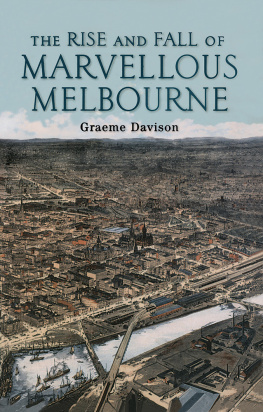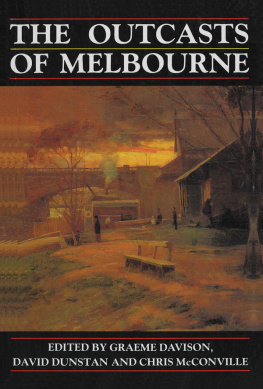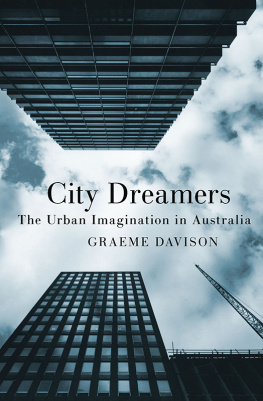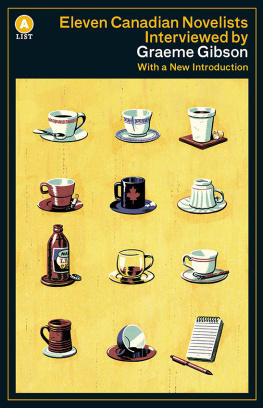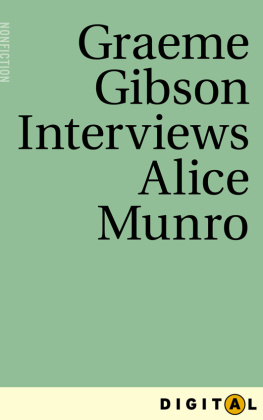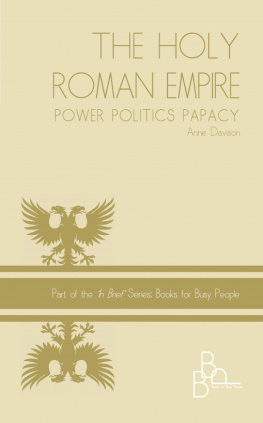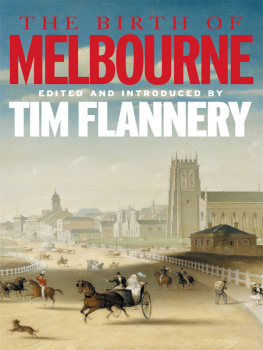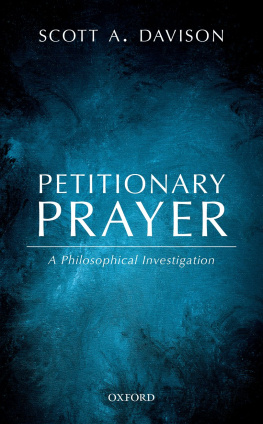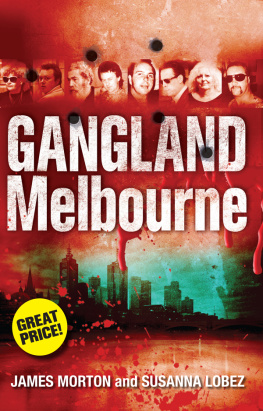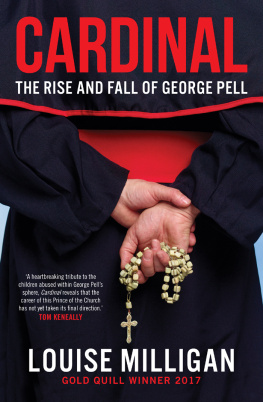THE RISE AND
FALL OF
MARVELLOUS
MELBOURNE
G raeme D avison
T o B arbara Again AND Always
MELBOURNE UNIVERSITY PRESS
An imprint of Melbourne University Publishing Ltd (MUP Ltd)
PO Box 1167, Carlton, Victoria 3053, Australia
mup-info@unimelb.edu.au
www.mup.com.au
First published 1978
Reprinted in paperback 1979, 1981, 1984, 1988
Second edition 2004
Text Graeme Davison 1978, 2004
Illustrations individual copyright holders (see Sources of Illustrations, page 372)
Design and typography Melbourne University Publishing Ltd 2004
This book is copyright. Apart from any use permitted under the Copyright Act 1968 and subsequent amendments, no part may be reproduced, stored in a retrieval system or transmitted by any means or process whatsoever without the prior written permission of the publishers.
Typeset in Malaysia by Syarikat Seng Teik Sdn. Bhd.
Printed in Australia by McPhersons Printing Group
Designed by Sandra Nobes
Cover illustration: A. C. Cooke, Melbourne 1882, from Illustrated Australian News Supplement, April 1882 (La Trobe Picture Collection, State Library of Victoria)
National Library of Australia Cataloguing-in-Publication entry
Davison, Graeme, 1940.
The rise and fall of marvellous Melbourne.
Rev. ed.
Bibliography.
Includes index.
ISBN 0 522 85123 1.
1. Melbourne (Vic.)History. 2. Melbourne (Vic.)Economic conditions18511901.
I. Title.
994.51
C ontents
The Gold-rush Merchantsthe Rise of the Agency Systemthe Mercantile Communitythe Counting House and the Commercial OfficeProblems of Successionthe Drift of TradeBalancing the Books
A Sense of Disparitythe Pattern of Industrial GrowthCaptains of IndustryApprenticeship in DecayIndustrial ConflictManufacturing in DepressionClass Formation and Industrial Development
The System and Its EnemiesArchitects and BuildersJourneymen and Mastersthe Torsion of the Marketthe SystemReturns
Professional Status: the Attack from Withinthe New ProfessionsProfessional Status: the Attack from Outside
The Rise of the Patronage SystemCivil Service Reformthe Boom and the BureaucratsRetrenchment and Reaction
The Advantages of Country and City Life Combined the Social Functions of Domestic PrivacyPatterns of Residential SegregationFactors in Suburban Growththe Public Transport Revolutionthe End of the Sprawl
A Home of One s Ownthe Pattern of OwnershipCompulsory Tenants and Reluctant Landlords
Foundations of a Plutocratic Society: the Structure of MeansAnticipatory Spending: the Marriage QuestionPatterns of Expenditurethe Depression: a Multiple Crisis of MeansDrastic Remediesa New Fashion of Austerity
The Ideal and Its CriticsHistory and Prophecythe Fall of the City and the Rise of the Rural Ideal
P reface TO THE S econd E dition
The Rise and Fall of Marvellous Melbourne was a pioneering study in Australian urban history, published at a time when our cities had only recently begun to claim the attention of academic historians. It enjoyed the success that sometimes comes when the author is lucky enough to hit on a great subject, was gratifyingly hailed from the first as a classic and awarded the Ernest Scott Prize, and has gone through several printings during the subsequent quarter of a century I am grateful to Melbourne University Publishing for the opportunity to republish it in this new edition.
Looking back, I am conscious of its defects and omissions, as well as its durable qualities, and of how differently I would approach the same topic today. But every book is of its time, and rather than attempt a complete revision, and risk pulling at a thread that might unravel completely, I have made only minor factual corrections and stylistic alterations to the original text. Much, of course, has been published on the subject since 1978 and I have therefore sought to guide the reader into this writing, and to indicate where it challenges or modifies my own interpretation, by a series of short introductions to the endnotes to each chapter. I have also revised and extended the illustrations.
Twenty-five years on, I am better able to see the book as the product of the particular times and places, as well as the personal and intellectual preoccupations, that led me to write it. Knowing what went into the book may perhaps give the reader some insight into how it is now best read. In the following pages I describe, as well as memory serves, the experiences and ideas that shaped the book, and attempt, as much as vanity and hindsight allows, a reappraisal of its main ideas.

I cannot recall when I first conceived the idea of writing about the history of Melbourne, but awareness of the citys past had been slowly growing since my childhood. My grandfather, Vic Hewett, was a self-educated printer and book collector. One Sunday afternoon he took me into his study, lined with first editions of Henry Lawson and other Bulletin writers, and showed me his latest prize, a map of the first Melbourne land sales in 1837. We marvelled at the tiny prices paid for prime city blocks, and the heroic enterprise that had transformed them, but gave little thought to the original possessors of the soil whose property had been sold. As a primary schoolboy, I walked from our house in suburban Essendon to the Aberfeldie State School, then almost on the citys north-western fringe. On the way home, we dawdled down streets subdivided in the 1880s, and named after the citys pioneersBatman, Fawkner, Buckleyor in honour of the land boomers political allies, like local member Alfred Deakin and temperance campaigner John Nimmo.
More than half a century later, many of the allotments were still vacant. During the postwar building boom my father, a self-employed plumber, helped to fill them up with spec-built weatherboard and brick veneer cottages. Over the summer holidays I sometimes joined him out on the block, listening to the conversation of his mates, sitting on the newly laid floors of the half-finished houses, pouring cups of strong black tea from a billy heated by a blowlamp. Perhaps it was then that I first heard the name of the notorious Tommy Bent, whose two-acre allotments were still being farmed along the Moonee Ponds Creek, and Jimmy Mirams, whose descendants still ran a local timber yard.
During the 1950s and 1960s Melbourne was in the midst of another of its recurrent booms. The nightmare of depression and war had receded, and the city entered an era of golden dreams. Marvellous Melbourne had been a creation of the lucky gold-rush generation and their spoiled children. The postwar boom was fuelled by a similar transition, from the depression generation to the luckiest generation of all, the postwar baby-boomers. The growth of the capital cities, and the burgeoning of their suburbs, was a material expression of the new prosperity of the postwar years. For families like mine, who had done it hard during the depression, these were truly abundant years. The brick veneer house, the Holden station wagon, the refrigerator, the washing machine, the Victa mower, and the Mixmaster brought a new level of comfort to Everyman and Everywoman. The advances of the 1880s boomthe spec-built cottage, the cable tram, the push mower and the gas ovenseemed modest by comparison.





